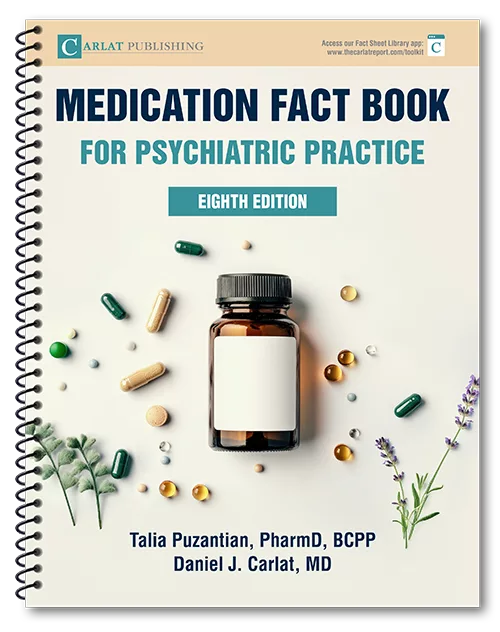Home » Fibromyalgia: What Should We Make Of It?
Fibromyalgia: What Should We Make Of It?
July 1, 2004
From The Carlat Psychiatry Report
Daniel Carlat, MD
Dr. Carlat has disclosed that he has no significant relationships with or financial interests in any commercial companies pertaining to this educational activity.
When a patient tells you that she has fibromyalgia, what should you, a psychiatrist, do? Should the diagnosis alter your treatment in any way?
While fibromyalgia (FM) has the reputation of being a vague entity, in fact the diagnosis is remarkably precise, according to criteria devised by the American College of Rheumatologists in 1990. The "ACR Criteria" require two things:
Now these are the kind of criteria that DSM-IV-trained psychiatrists can understand!
However, things are not as clear as you might think. For disease criteria to be meaningful, they should be constructed in relationship to a gold standard, or reference standard. But there is no objective test to diagnose FM, and the reference standard used by the ACR was simply a group of 293 patients who had been given the label "fibromyalgia" by rheumatologists based on their "usual method of diagnosis." If you think academic psychiatrists squabble, check out the fibromyalgia wars in rheumatology journals. Recently, one of the main architects of the ACR criteria advocated abandoning the notion of "tender points" altogether because of concerns that they are unreliable (J Rheum 2003; 30:1671-1672).
Nonetheless, you will continue to see FM patients in your practice, and you should know what you can do to make their lives better. The disorder affects 2% of adults, strikes females much more often than males, and the risk is highest in the 55-79 year age group. As psychiatrists, we have plenty of work to do, because more than two thirds of FM patients have a current or past mood disorder. Comorbid anxiety disorders are nearly as common (Psychosomatics 1999; 40:57-63).
Given these figures, it is not surprising that the treatments shown most effective for this chronic pain condition are treatments often delivered by psychiatrists and psychologists: antidepressants (ADs), cognitive behavior therapy, and the prescription of an exercise program.
The most well-studied antidepressants are, you guessed it, tricyclics, which do tend to diminish pain symptoms and improve sleep (see Ann Behav Med 1999; 21:180-191, for a thorough review). Amitriptyline is the tricyclic with the most data: start at 25 mg to 50 mg QHS, but try to inch up on the dose if there are clear depressive symptoms. One study tried the combination of Prozac and amitriptyline and achieved unusually good results.
While ADs help with pain and insomnia in FM, only physical exercise has consistently been shown to help all aspects of day-to-day functioning (Cochrane Database Syst Rev 2002; 3:CD003786). Patients who can comply with aerobic exercise at least twice a week, for at least 6 weeks in a row, report improved well-being and less tender point pain.
Finally, cognitive behavior therapy helps FM patients. A typical regimen used in studies is a weekly 2 hour session focusing on coping with chronic pain, increasing self efficacy, and combating the tendency to catastrophize each pain event (Arthritis Care and Research 2004; 51: 184-192). It works well in diminishing pain, but the effects tend to wear off after a year.
Patients might ask you about recent studies reporting neuroimaging findings in FM. Here's the scoop. Functional MRI studies have shown that certain brain regions show greater activity in response to pain in FM patients than in control subjects (Arthritis & Rheumatism 2002; 46:1333-1343, J Rhematol 2004; 31:364- 378). These are interpreted as evidence that FM is a biological disease caused by "cortical or subcortical augmentation of pain processing." However, a more recent study throws doubt on this conclusion. In this study, researchers found that the degree of brain activity in response to pain was proportional to the degree that FM patients cognitively "catastrophized" their pain (Brain 2004; 127:835-843). This is consistent with the data on the efficacy of cognitive behavior therapy in FM, and once again makes FM seem closer to a psychiatric than a rheumatologic disorder.
But no matter how FM is sliced and diced diagnostically, the pain and suffering are real, and psychiatrists can do plenty to help.
TCR VERDICT: Fibromyalgia: Real enough to hurt.
General PsychiatryWhile fibromyalgia (FM) has the reputation of being a vague entity, in fact the diagnosis is remarkably precise, according to criteria devised by the American College of Rheumatologists in 1990. The "ACR Criteria" require two things:
- The presence of widespread pain that persists for at least 3 months (to qualify for the term "widespread," the pain must be present above and below the waist and on both the sides of the body);
- The identification of at least 11 from a list of 18 possible tender points.
Now these are the kind of criteria that DSM-IV-trained psychiatrists can understand!
However, things are not as clear as you might think. For disease criteria to be meaningful, they should be constructed in relationship to a gold standard, or reference standard. But there is no objective test to diagnose FM, and the reference standard used by the ACR was simply a group of 293 patients who had been given the label "fibromyalgia" by rheumatologists based on their "usual method of diagnosis." If you think academic psychiatrists squabble, check out the fibromyalgia wars in rheumatology journals. Recently, one of the main architects of the ACR criteria advocated abandoning the notion of "tender points" altogether because of concerns that they are unreliable (J Rheum 2003; 30:1671-1672).
Nonetheless, you will continue to see FM patients in your practice, and you should know what you can do to make their lives better. The disorder affects 2% of adults, strikes females much more often than males, and the risk is highest in the 55-79 year age group. As psychiatrists, we have plenty of work to do, because more than two thirds of FM patients have a current or past mood disorder. Comorbid anxiety disorders are nearly as common (Psychosomatics 1999; 40:57-63).
Given these figures, it is not surprising that the treatments shown most effective for this chronic pain condition are treatments often delivered by psychiatrists and psychologists: antidepressants (ADs), cognitive behavior therapy, and the prescription of an exercise program.
The most well-studied antidepressants are, you guessed it, tricyclics, which do tend to diminish pain symptoms and improve sleep (see Ann Behav Med 1999; 21:180-191, for a thorough review). Amitriptyline is the tricyclic with the most data: start at 25 mg to 50 mg QHS, but try to inch up on the dose if there are clear depressive symptoms. One study tried the combination of Prozac and amitriptyline and achieved unusually good results.
While ADs help with pain and insomnia in FM, only physical exercise has consistently been shown to help all aspects of day-to-day functioning (Cochrane Database Syst Rev 2002; 3:CD003786). Patients who can comply with aerobic exercise at least twice a week, for at least 6 weeks in a row, report improved well-being and less tender point pain.
Finally, cognitive behavior therapy helps FM patients. A typical regimen used in studies is a weekly 2 hour session focusing on coping with chronic pain, increasing self efficacy, and combating the tendency to catastrophize each pain event (Arthritis Care and Research 2004; 51: 184-192). It works well in diminishing pain, but the effects tend to wear off after a year.
Patients might ask you about recent studies reporting neuroimaging findings in FM. Here's the scoop. Functional MRI studies have shown that certain brain regions show greater activity in response to pain in FM patients than in control subjects (Arthritis & Rheumatism 2002; 46:1333-1343, J Rhematol 2004; 31:364- 378). These are interpreted as evidence that FM is a biological disease caused by "cortical or subcortical augmentation of pain processing." However, a more recent study throws doubt on this conclusion. In this study, researchers found that the degree of brain activity in response to pain was proportional to the degree that FM patients cognitively "catastrophized" their pain (Brain 2004; 127:835-843). This is consistent with the data on the efficacy of cognitive behavior therapy in FM, and once again makes FM seem closer to a psychiatric than a rheumatologic disorder.
But no matter how FM is sliced and diced diagnostically, the pain and suffering are real, and psychiatrists can do plenty to help.
TCR VERDICT: Fibromyalgia: Real enough to hurt.

Issue Date: July 1, 2004
Table Of Contents
Recommended
Newsletters
Please see our Terms and Conditions, Privacy Policy, Subscription Agreement, Use of Cookies, and Hardware/Software Requirements to view our website.
© 2026 Carlat Publishing, LLC and Affiliates, All Rights Reserved.


_-The-Breakthrough-Antipsychotic-That-Could-Change-Everything.webp?t=1729528747)



